Family BTR-60 / 70 / 80 in combat
In accordance with some of the available data as of 1995, the BTR-60 of various modifications (mainly BTR-60PB) were in the armies of Algeria, Angola, Afghanistan, Bulgaria, Botswana (24 units), Vietnam, Guinea, Guinea-Bissau, Egypt, Zambia (10 units), Israel, India, Iraq, Iran, Yemen, DPRK, Cambodia, Congo (28 units), Cuba, Laos, Libya, Lithuania (10 units), Mali, Mozambique (80 units), Mongolia, Nicaragua ( 19 units), Syria, Sudan, Turkey (obtained from Germany), Finland (110 units), Estonia (20 units). In addition, at present they are still in service in the armies of many CIS countries.
Interestingly, the export and re-export of the BTR-60 to various countries continues to this day. So, only in 2001, Ukraine transferred the 170 armored personnel carriers (136 BTR-60PB and 34 BTR-70) to the UN peacekeeping contingent in Sierra-Leone. Including the Nigerian contingent transferred 6 BTR-60PB, to the Ghany peacekeeping contingent 6 BTR-60PB, to the Kenya peacekeeping battalion 3 BTR-60PB, one BTR-60B The Guinea peacekeeping peacemaking peacekeeping peacekeeping peacekeeping battalion
Compared with the BTR-60, the geography of the distribution of the BTR-70 armored personnel carriers is significantly narrower. In the 1980-s, in addition to the Soviet Army, they entered into service only the National People's Army (NNA) GDR and the Afghan government forces. In addition, an analogue of the BTR-70 (TAV-77), produced under a Soviet license in Romania, was in service with its own army. At present, these combat vehicles are part of the armies of almost all CIS countries. As of 1995 year, except for the CIS countries, the BTR-70 was in service in Estonia (5 units), Afghanistan, Nepal (135) and Pakistan (120 units obtained from Germany), Sudan, Turkey (obtained from Germany).
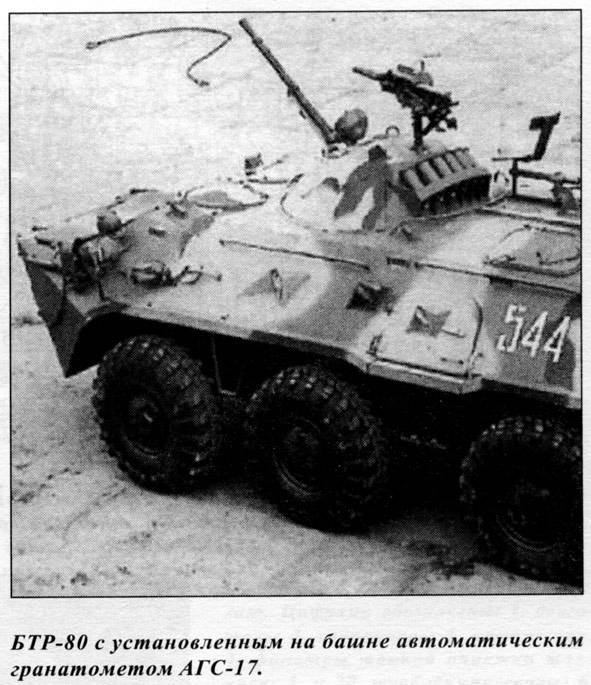
The armored personnel carriers BTR-80, according to 1995, were in service in almost all CIS countries, as well as in Estonia (20 units), Hungary (245 units), Sierra Leone, Turkey (100). The contract for the sale of a consignment of Russian armored personnel carriers BTR-80А to Turkey was signed in 1995. This is the first time that the latest Russian military equipment comes into service in a country that is a member of NATO. Apparently, the choice made by the Turkish military is not accidental. Several years ago, Turkey received from Germany Soviet armored personnel carriers BTR-60PB and BTR-70 from the NNA GDR arsenals and had already managed to test them in combat conditions in the mountains of Kurdistan.
Since the production of the BTR-80 continues, it must be assumed that the above list of countries and the number of BTR-80 armored personnel carriers at their disposal will be substantially increased. So in the beginning of 2000, the Hungarian army received the last 20 armored personnel carriers BTR-80, which concluded the contract for the supply of 487 vehicles of this type from Russia. In just the past five years, Budapest received 555 armored personnel carriers BTR-80 (including BTR-80А), of which 68 was transferred to the Ministry of the Interior. By supplying armored personnel carriers, Russia paid off Hungary’s debt, which remained from Soviet times. The total cost of supplies amounted to 320 million US dollars (about 576600 dollars per BTR). According to the data in the mass media in 2000, the North Korea acquired a batch of Russian armored personnel carriers at the Eurosatory - 2000 armament salon in France. The Arzamas Machine Building Plant was supposed to deliver ten BTR-80 to Pyongyang. On October 15 2002, the first batch of BTR-80А was sent to Indonesia (12 BTR-80А, personnel and spare parts).
In Russia itself, in addition to the Russian Army, the BTR-80 is in service with the Internal Troops and the Marine Corps. They are used by the Russian contingents of the UN forces in Bosnia and Kosovo.
In a military action, the BTR-60 armored personnel carriers were first used during the Danube operation - the entry of troops of the Warsaw Treaty countries into Czechoslovakia in 1968. The signal "Vltava 666" entered the troops on August 20 at 22 p.m. 15 min., And already at 23 o’clock troops totaling 500 thousand people from 5 thousand tanks and armored personnel carriers crossed the Czechoslovak border. From the territory of the German Democratic Republic, the 1st Guards Tank Army and the 20th Guards Army were introduced into Czechoslovakia. Here the border crossing was carried out on August 21 “suddenly”, on a 200 km front simultaneously by forces of 8 divisions (2 thousand tanks and 2 thousand armored personnel carriers, mainly BTR-60). After 5 hours. 20 minutes. after crossing the state border, units and formations of the 20th Guards Army entered Prague.
Fortunately 200 thousand Czechoslovak army did not render practically any resistance, although in a number of its units and formations there were cases of “anti-Soviet psychosis”. Fulfilling the order of her Minister of Defense, she remained neutral until the end of events in the country. This made it possible to avoid bloodshed, since the Warsaw Pact troops received well-defined “recommendations”. In accordance with them, a white stripe was introduced — the distinctive sign of “our own” and allied forces. All military equipment without white stripes was subject to "neutralization" preferably without firing. However, in the event of resistance, "no-wave" tanks and other military equipment "were subject to" immediate destruction. " For this, it was not necessary to receive "sanctions" from above. When meeting with NATO troops, it was ordered to stop immediately and “not to shoot without a command”.
The Soviet-Chinese border conflict in the area of Damansky Island in March 60 can be considered a real baptism of BTR-1969. After the sharp deterioration of Soviet-Chinese relations in the middle of the 1960s, work began on strengthening the Far Eastern frontiers of the Soviet Union: the redeployment of individual units and formations of the Armed Forces from the western and central regions of the country to Transbaikalia and the Far East began; the frontier zone was improved in engineering; combat training began to be conducted more purposefully. Most importantly, measures were taken to strengthen the firing capabilities of border outposts and border detachments; the number of machine guns in the units increased, including heavy, anti-tank
grenade launchers and other weapons; Armored personnel carriers of the type BTR-60PA and BTR-60PB began to arrive at the outposts, maneuverable groups were created in the border detachments.
It must be emphasized that the Chinese leaders were vitally interested in a major “victorious” conflict on the Soviet-Chinese border. Firstly, this guaranteed the generals a solid representation in the country's leadership, and secondly, the military-political leadership could confirm the correctness of the policy of turning China into a military camp and preparing for war, the instigator of which would be Soviet "social-imperialism". The preparation of a combat plan, using approximately three infantry companies and a number of military units, covertly located on Damanski Island, was completed on January 25 of 1969. The general staff of the PLA has made some adjustments to the plan. In particular, he noted that if Soviet soldiers would use improvised means (“for example, wooden sticks”) or armored personnel carriers, then Chinese soldiers should “decisively fight back”, using similar sticks and undermining combat vehicles.
On the night of March 2, the PLA units (about 1969 soldiers) invaded Damansky Island and, having equipped single trenches, set up an ambush. In the morning of March 300, the border post of the Nizhne-Mikhaylovka outpost reported to the commander about the violation of the USSR state border by two groups of Chinese with a total of up to thirty people. Immediately, the head of the outpost, Senior Lieutenant I. Strelnikov with a group of 2 border guards, drove a BTR-30 and two vehicles towards violators. He decided to block them from two sides and oust them from the island. With five border guards, Strelnikov headed for the island from the front. At a distance of 60, the second group of 300 people moved from them. The third group of border guards from 12 people went to the island from the flank. When the first group approached the Chinese, their forward chain suddenly parted and the second line opened fire. The first two groups of Soviet border guards died on the spot. Simultaneously, from an ambush on the island and from the Chinese coast, fire was opened from machine guns and mortars on the third group, which was forced to occupy all-round defense. Immediately joined the battle and units of Chinese soldiers, who on the eve of the night penetrated the island.
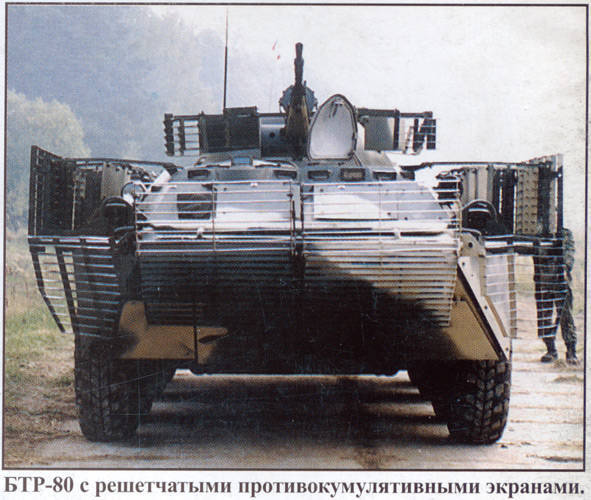
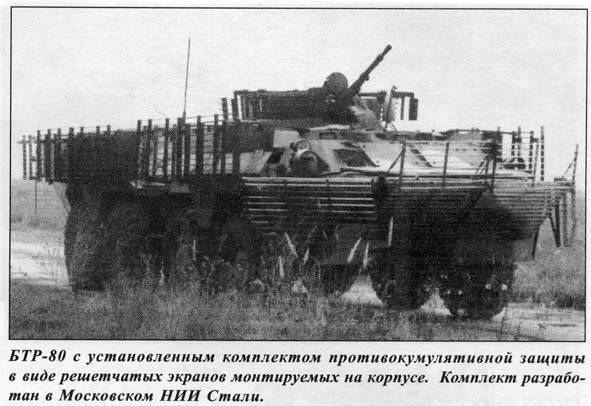
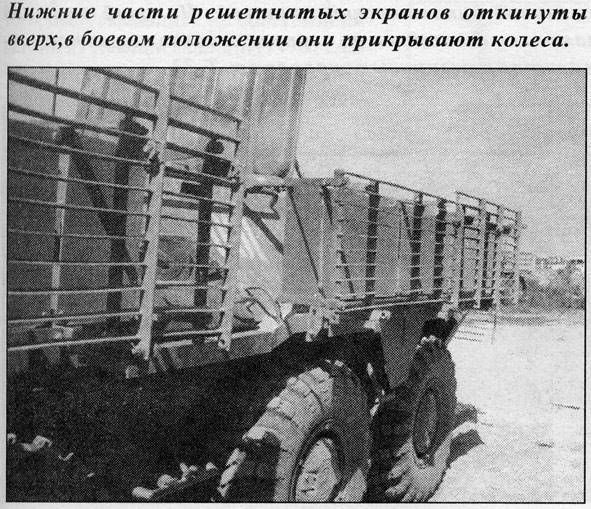
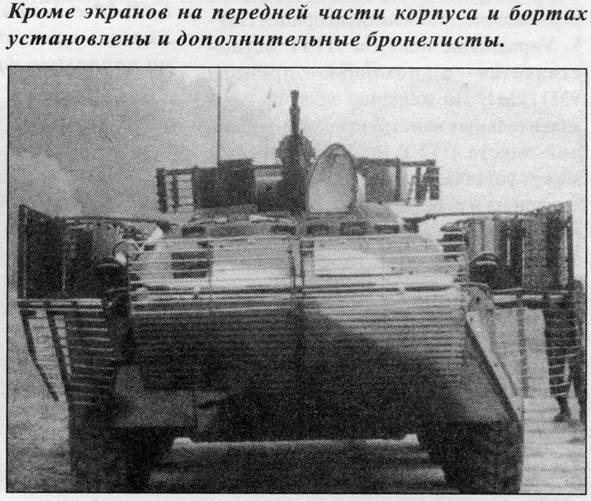
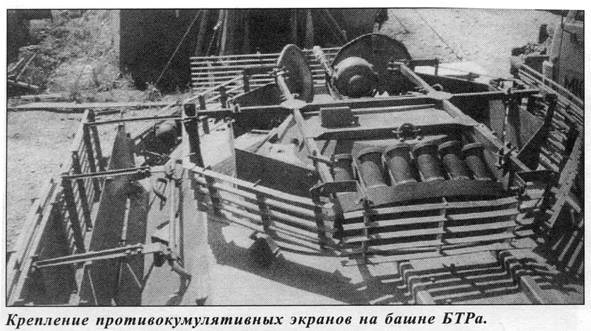
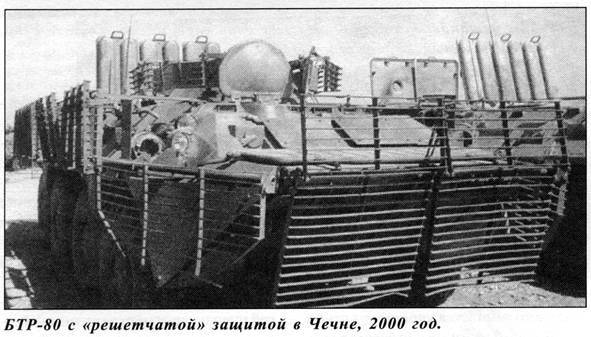
A moto-maneuverable group on the armored personnel carriers of the neighboring Kulebyaki Sopki outpost headed by the head of the outpost, Senior Lieutenant V. Bubenin, urgently went to the rescue of our border guards. She managed to bypass the enemy from the rear and throw him over the embankment on the island. The battle with varying success lasted all day. At this time, the command of the Imansky border detachment (which included the outposts of Nizhne-Mikhailovka and Kulebyakiny Sopki), led by Colonel D. Leonov, along with the maneuvering group and the school of non-commissioned officers of the frontier detachment were in the teachings of the Far Eastern Military District. After receiving a report on the battles in Damanskiy, D. Leonov immediately ordered to remove the sergeant’s school from the exercises, the maneuvering group and move to the island area. By the evening of March 2, the border guards beat off the Damansky and entrenched themselves on it. In order to prevent possible repeated provocations, a reinforced maneuverable group of frontier detachments under the command of Lieutenant Colonel E. Yanshin (45 man with grenade launchers) on 4 BTR-60PB advanced to Damansky. The reserve was concentrated on the shore - 80 people in armored personnel carriers (school of non-commissioned officers). On the night of March 12, units of the 135 Motorized Rifle Division of the Far Eastern Military District arrived in the area of recent fighting.
However, no one knew what to do next. The military-political leadership of the USSR was silent. The army units and subunits did not have appropriate orders from either the Minister of Defense or the General Staff. The leadership of the KGB, in charge of which the border guards were in charge, also took a wait-and-see attitude. This is what explains a certain confusion in the actions of the Soviet border guards, which 14 March clearly showed when repelling massive attacks (“human waves”) from the Chinese side. As a result of spontaneous and ill-considered decisions of the headquarters border town, Soviet border guards suffered heavy losses (Colonel D. Leonov was killed, the Chinese seized the secret tank T-62) and were forced to leave Damansky by the end of the day. In fact, the units and divisions of the 135 Motorized Rifle Division saved the situation. At its own risk and risk, its headquarters ordered the 122-mm howitzer artillery regiment, the Grad detachment of the BM-21 detachment and the mortar batteries of the 199 regiment (Lieutenant-Colonel D. Krupeinikov) to make a powerful artillery attack on the island and the opposite shore to the depth of 5- 6 km. The motorized rifle battalion under the command of Lieutenant Colonel A. Smirnov set a point above the "i". Within a few hours (having lost 7 people killed and 9 injured, as well as 4 BTR-60PB) he managed to completely clean the Damansky. Chinese casualties were about 600 people.
In the summer of the same 1969, the situation was noticeably aggravated on the Kazakhstan sector of the Soviet-Chinese border, in the area of the Dzungarian bulge, guarded by the Uch-Aral border detachment. And here the Soviet border guards were used BTR-60 in combat conditions. On August 12, border patrols at the observation posts “Spring” and “Zhalanashkol” noticed movement of certain groups of Chinese soldiers in the adjacent territory. Lieutenant-General Merkulov, head of the Eastern Border Troops of the Eastern District, suggested that the Chinese side organize a meeting and discuss the situation. There was no answer. The next day, at about five o'clock in the morning, Chinese servicemen in two groups of 9 and 6 entered the line of the USSR State border at the Zhalanashkol border post and by seven o'clock went deeper into the border area at a distance of 400 and 100. dig in, demonstratively go to the trenches at the border line, ignoring the demands of the Soviet border guards to return to their territory. At the same time, around the 100 armed Chinese were concentrated beyond the border line in the mountains.
A few minutes later, armored personnel carriers, outpost personnel and reserves from neighboring outposts arrived in the area of intruders. The actions of all these forces were led by Lieutenant Colonel P. Nikitenko, the Chief of Staff of the detachment. An hour later, from the side of the invading group, several shots were fired in the direction of the trench line of the Soviet border guards. For violators, the fire was returned. A fight started. At this time, three groups of over 40 Chinese, armed with small weapons and RPGs, came close to the State border and attempted to intersect it in order to capture the nearest Kamennaya hill. The reinforcements that had come up from the next outpost — a maneuverable group on three BTR-60PB — went into action immediately. The first armored personnel carrier (airborne No.217) under the command of Junior Lieutenant V.Puchkov was under heavy enemy fire: external equipment was demolished by bullets and fragments, riddles were riddled, armor was struck in several places, and the tower was wedged. V.Puchkov himself and the driver of the BTR V.Pischulev were injured.
A group of eight fighters, reinforced by two armored personnel carriers, under the command of Senior Lieutenant V. Olshevsky, turned into a chain, began to bypass the violators from the rear, cutting off their escape routes. From the side of the enemy's outpost, a group of assistant chief of staff of the maneuverable group, Captain P. Terebenkov, attacked. By 10 hours of the morning the battle was over - the Soviet side had lost the 2 border guards killed (sergeant M. Dulepov and Private V. Ryazanov) and 10 people were injured. 3 of the Chinese were captured. On the battlefield, 19 corpses of raiders were picked up.
But the real test for the whole family of GAZ-ovsky armored personnel carriers was Afghanistan. Over the decade of the Afghan war, from 1979 to 1989, both the BTR-60PB, BTR-70 and BTR-80 passed through it. In developing the latter, the results of an analysis of the Afghan experience in the use of armored personnel carriers were widely used. It should be mentioned here that the BTR-60PB was in service not only with the Soviet Army, but also with the Afghan government forces. Deliveries of various weapons from the Soviet Union here began in 1956 during the reign of Mohammed Zair Shah. The BTR-60PB armored personnel carriers of the Afghan Army often participated in military parades held in Kabul.
At the time of entry of troops, armored vehicles of motorized rifle divisions of the Central Asian Military District were represented by armored personnel carriers BTR-60PB, infantry fighting vehicles BMP-1 and reconnaissance and patrol vehicles BRDM-2. In addition, two out of three motorized rifle regiments were manned with armored personnel carriers (the third was armed with BMP-1). The use of the BTR-60PB at the initial stage is explained by the fact that relatively new, for that period, the BTR-70 (their production was launched in the 1976 year) were primarily equipped with the GSVG and Western military districts. The unfolded military clashes showed that Soviet armored vehicles are not sufficiently protected from modern anti-tank weapons, they are fire dangerous, and tracked vehicles (tanks and infantry fighting vehicles) are quite vulnerable to undermining. The tanks, T-62 and T-55, which were in service with the Central Asian Military District, were urgently forced to modernize. They installed the so-called anti-cumulation grilles and additional armor plates on the towers, which the soldiers called "Ilyich eyebrows." And the BMP-1 was generally withdrawn from Afghanistan and urgently replaced by the newest BMP-2 transferred from Germany.
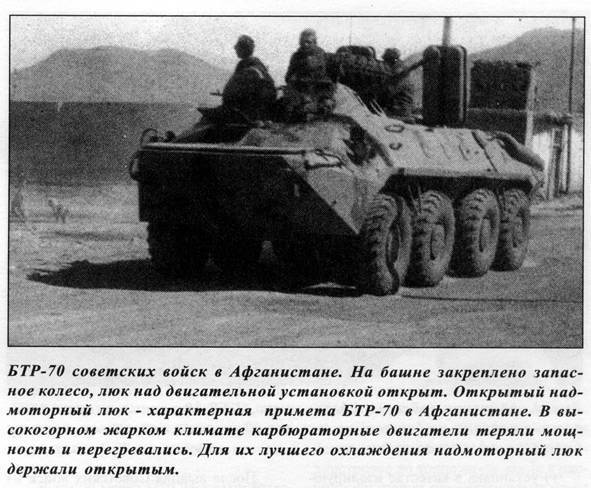
The same had to be done with the BTR-60PB. In Afghanistan, its shortcomings manifested themselves, aggravated by the special physiographic conditions of the theater of operations. In the hot high-altitude climate, the “sixtieth” carburetor engines lost power and overheated, and the limited lifting angle of the armament (30 ° in total) made it impossible to fire at highly located targets on the slopes of mountain gorges, and protection from cumulative ammunition was also insufficient. As a result, the BTR-60PB was fairly quickly replaced by the BTR-70, however, control vehicles based on the "sixtieth" were used in Afghanistan until the withdrawal of the Soviet troops. But the BTR-70 also had almost the same drawbacks. The security has practically not improved, the problem of overheating of the engines has not been resolved and even worsened due to a slightly increased power of the propulsion system and design features of the crankcase. Therefore, very often the “seventies” in Afghanistan moved with open, over-engine hatches to improve cooling. True, they had a significantly increased (to 60 °) angle of elevation of machine guns, as well as increased fire safety due to the placement of fuel tanks in isolated compartments and an improved fire extinguishing system.
Through Afghanistan passed and adopted for service later BTR-80. The powerful diesel engine installed on the new car instead of two carburetors made it possible for the troops to more effectively use the combat vehicle in the conditions of mountains and deserts, since rarefied air does not adversely affect the operation of the diesel engine. At the same time, the power reserve significantly increased and fire risk decreased. However, the security of the BTR-80 remained inadequate. This is confirmed by the loss figures - in the nine years of the war in Afghanistan, 1314 BTR and BMP, as well as 147 tanks were lost. Therefore, the troops carried out an enormous amount of work to find additional means of enhancing the protection of personnel and armored personnel carriers themselves, primarily from hits of cumulative projectiles, as well as 12,7-mm and 14,5-mm machine guns. Cumulative shells and large-caliber bullets hit the armored personnel carrier, getting into the outdoor equipment or flying into the existing units through the blinds and open hatches. Lack of armored and characterized the entire engine compartment.
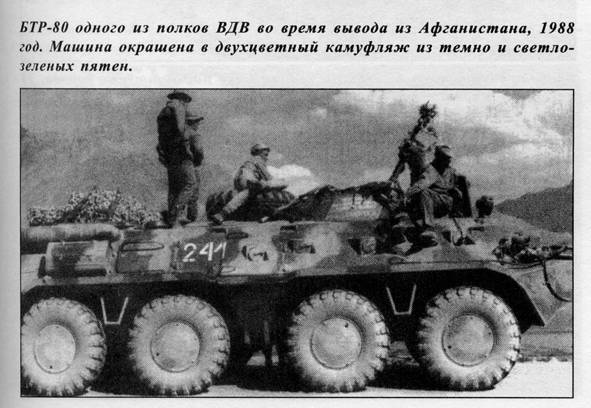
Considering this, separate screens from bullets and grenades were installed in combat operations on armored personnel carriers, special lattice screens made from sheets of automobile springs, screens made of rubberized material were hung between the wheels, and other improvised means of protection were used: automobile wheels, containers with water, oil, sand or stones, etc. Artfully made protection devices did not receive widespread adoption. The main reason was the increase in the mass of the BTR, which adversely affected its operational and technical characteristics, because even in its “pure” form, the BTR-80 was heavier than its predecessors by about 2 tons.
In 1986, based on the experience of the use of armored personnel carriers and through experimental and theoretical research, the BTV Military Academy developed a set of measures to increase the anti-bullet resistance of vehicles. Among them:
Calculations showed that with the implementation of these measures, the increase in the mathematical expectation of the number of unaffected motorized infantry after firing a heavy machine gun from a distance of 200 m can reach 37% with an insignificant (about 3%) increase in the mass of the combat vehicle.
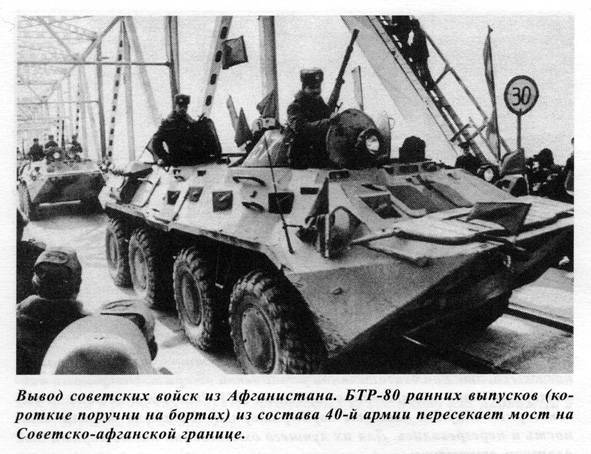
Much better was the situation with the wheeled armored personnel carriers' durability which, in some cases, amazed the imagination. Here is a typical example. After the bombing of the BTR-80 on the TM-62P mine (an explosion occurred under the right front wheel), the wheel tires were completely destroyed, the wheel reducer, the wheel suspension, the shelf above the wheel were damaged. Nevertheless, the car left the site of the explosion independently (after passing 10 km from the site of the explosion), and the people inside the car received only light and medium contusions. The restoration of the car in the repair company of the regiment took only one day - the replacement of the failed units. Not a full-time anti-tank anti-tracked mine was almost able to stop our BTR. Dumming men, in order to truly disable the BTR, laid under a mine a bag with 20-30 kg of TNT. Tracked vehicles were in this sense much weaker. The BMP after the explosion often the body burst on welding, and it was no longer subject to recovery. BMD did not keep mine at all. The crew and the landing partly died, partly received heavy wounds. The car itself could only be evacuated from the blast site on a trailer.
After the withdrawal of Soviet troops from Afghanistan in the 1989 year, Gaz-ovsky armored personnel carriers, more and more often began to be used in the territory of the disintegrating Soviet Union itself. Due to their multiplicity, they were widely used by various warring parties in most of the armed conflicts that broke out. Obviously, for the first time in a large number of armored personnel carriers appeared on the streets of Tbilisi in April 1989 of the year, during the times of the USSR. The military units separated the conflicting parties in the Osh Valley, on the border of Kyrgyzstan and Uzbekistan, in Nagorno-Karabakh and South Ossetia. In January 1990, the storming of Baku took place. A year later, armored personnel carriers appeared on the streets of Vilnius, and then Moscow, during the period of the ever-memorable State Emergency Committee.
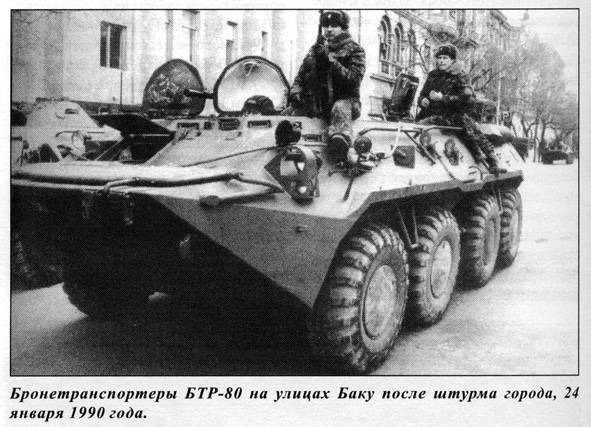
In 1992, an armed conflict broke out between the Republic of Moldova (RM) and the Pridnestrovskaia Moldavskaia Respublika (Pridnestrovian Moldavian Republic). The beginning of a large-scale war on the Dniester can be dated 2 in March, when a Moldovan special police unit (OPON) launched a provocative attack on a Russian military unit near Dubosari. By this time, Moldova already had a significant number of armored vehicles, both transferred from the arsenals of the former Soviet Army and generously supplied from Romania. Only in December 1991, the 27 units of the BTR-60PB and 53 units of the MT-LB-AT, 34 MiG-29 and 4 Mi-8 helicopters and a significant amount of other heavy weapons were transferred to Moldova. And from fraternal Romania for the period from May to September 1992 of the year were delivered weapons and ammunition worth more than three billion lei, including 60 tanks (T-55), more than 250 armored personnel carriers (BTR-80) and infantry fighting vehicles. Obviously, all the Moldovan BTR-80 used in the fighting were of Romanian origin, since, according to the Russian military, they were not in service with the 14 Army. Thanks to such an extensive arsenal, OPON troops could use a large number of armored personnel carriers in the March battles, while Transdniestrians had only three GMZs (tracked minelayers), MT-LB and one BRDM-2 in the Dubosar region. However, despite such unequal forces, Transnistrians resisted. As a trophy, a new BTR-80 (of Romanian production) was captured by the driver and one of its crew members were citizens of Romania. These volunteers were not lucky - they were killed.
1 April 1992, the first invasion of Bender occurred. At 6 in the morning, two Moldovan armored personnel carriers broke into the city, heading for the intersection of Michurin and Bendery Uprising streets, where a change of police station took place. Moldova’s gunmen shot with machine guns “rafiki” of police and guards (several people died), as well as a bus that happened to be nearby, carrying a regular shift of workers at a cotton spinning mill. Among them were also victims.

At the end of March, the OPON officers attempted to cut the Tiraspol-Ribnita highway. Of the six armored personnel carriers that went to the PFP position, five vehicles were destroyed.
In May, 1992, harassed by the continued artillery shelling of Dubosari, local residents blocked the road for the 14 Army's troops returning from the landfill. The 10 T-64BV and 10 armored personnel carriers BTR-70 were captured. Of these, an armored group was immediately formed, which was thrown into the area from which intensive shelling was carried out.
The next escalation of the military situation occurred in June. In several directions, armored vehicles of Moldova broke into Bender. The first stage involved up to 50 armored vehicles. Armored personnel carriers and airborne combat vehicles, almost without reducing speed, shot improvised barricades. Active hostilities continued in Transnistria until the end of July, when the peacekeeping forces of Russia entered the republic.
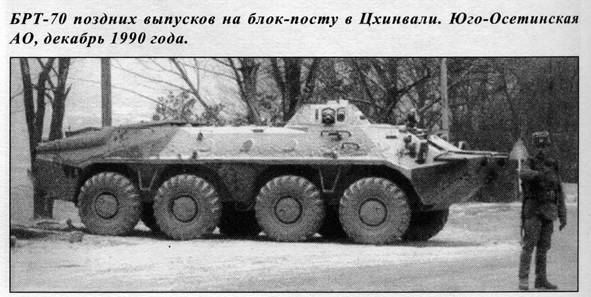
In the same year, 1992 broke out a war between Georgia and Abkhazia, which was the subject of the Republic of Georgia at that time. On the morning of August 14, the outfit of the consolidated regiment of the Ministry of Internal Affairs of Abkhazia, who was on duty on a bridge over the Inguri river, saw a column of Georgian armored vehicles moving towards the Georgian-Abkhaz border. Five fighters were disarmed almost without a fight. Abkhazia was taken by surprise. Interestingly, the Georgian side planned the invasion of Abkhazia, which received the code name of the operation “The Sword” in a completely different way. At night, it was planned to transport the assault detachments of the Georgian Defense Ministry to Abkhazia by rail. Along the way, the Georgian soldiers with equipment were to land at strategic facilities, and in Sukhumi they would be connected with a unit of the Mkhedrioni armed formation stationed in the sanatorium of the Tarasi camp. XI Congress, a few kilometers from the city center. However, on the eve of the start of operations in the territory of Western Georgia, a large section of the railway leading to Abkhazia was blown up by supporters of Z. Gamsakhurdia, deposed before this president. This forced an urgent review of the plans of the operation, and it was decided to "go head on."
In the Caucasus, as well as in Transnistria, one of the conflicting parties had an overwhelming superiority in armored vehicles. At the time of the invasion, the Georgian military group numbered about three thousand people and was armed with five T-55 tanks, several BMP-2 combat vehicles, three BTR-60, BTR-70 armored personnel carriers, Grad fire rocket launchers, and Mi helicopters -24, Mi-26 and Mi-8. Abkhazia practically did not have armored vehicles and heavy weapons, almost all the armored personnel carriers and infantry fighting vehicles, which it had at the end of the war, were obtained by the Abkhaz militia during the military operations of the Georgians.
The use of armored personnel carriers in the course of the two “Chechen wars” of 1994 and 1999 by both sides was extremely broad in nature and required a separate large study. Here we can only dwell on certain points.
It is well known that in service with the regular units of D. Dudayev’s army there was a large number of armored vehicles. Only in Grozny, when Russian troops left Ichkeria virtually unarmed in June 1992 under the threat of hostilities from the Chechens, armored vehicles 108 units were left: the T-42 and T-62 and BMP-72 tanks The 36 BTR-1. In addition, the military left 2 units of modern anti-tank weapons, which, as subsequent events showed, played an important role in the destruction of armored vehicles of the Russian army. It should, however, be remembered that the exact number of military equipment at the disposal of Chechens is unknown - the flow of weapons into this region remained constant and uncontrolled by the federal authorities. So, according to official data, the Russian Armed Forces only from 30 December 70 of the year to 590 February 11 of the year destroyed the 1994 tank and 8 BMP and BTR, 1995 tanks and 64 BMP and BTR were captured.
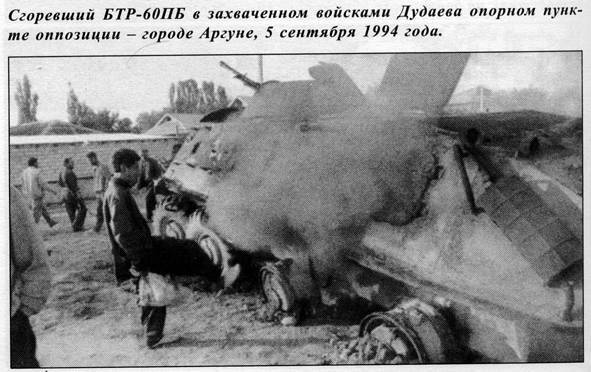
According to the then head of the GBTU, Colonel-General A. Galkin, an 2221 armored vehicle unit was deployed in Chechnya, from which (as of early February 1995), 225 units — the 62 tank and the 163 BMP and the BTR — were irretrievably lost. The heavy losses of Russian technology, including armored personnel carriers, at the initial stage of the First Chechen War, and especially during the storming of Grozny, are due to inappropriate tactics, underestimation of the enemy and insufficient combat readiness. Russian troops entered Grozny without surrounding it and cutting it off from reinforcements. It was planned to seize the city on the move, not even dismounting. Due to the lack of personnel, the columns were mixed, and most of the BTRs moved with minimal foot cover or without it. These first columns were completely destroyed. After regrouping, the number of infantry was increased, and the systematic liberation of the city began house by house, quarter after quarter. Losses in armored vehicles were significantly reduced due to a change in tactics. Assault groups were formed, the Russian infantry moved flush with armored vehicles to support and cover it.
The bulk of the Russian BTR was destroyed with anti-tank grenades and grenade launchers. In the conditions of urban combat, armored personnel carriers were poorly adapted, because of poor booking, moreover, it was possible to hit them in the least protected places - in the stern, roof, sides. The favorite targets of Chechen grenade launchers were fuel tanks and engines. Density of firing of anti-tank weapons during street fighting in Grozny was 6-7 units for each armored vehicle. As a result, in the case of almost every wounded machine there were on average 3-6 hits, each of which would be quite enough for disabling. An acute problem was the low fire protection of the BTR after the cumulative grenades and shells hit them. The fire extinguishing systems of domestic armored vehicles showed an unacceptably long reaction time and low effectiveness of fire fighting equipment. As a result, more than 87% hits of RPG shots and 95 percent of ATGM in an armored personnel carrier led to their defeat and fire. For tanks, this number was respectively equal to 40 and 75%.
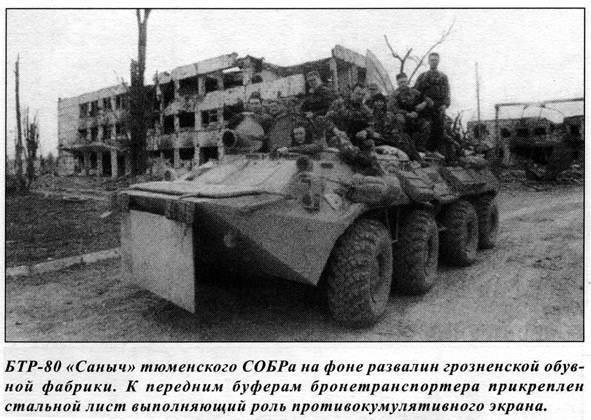
It seems strange that the vast experience of the use of armored personnel carriers accumulated during the ten-year Afghan war was not used by top military leaders who could not draw appropriate and timely conclusions about the quality and ways of modernizing domestic armored personnel carriers. As a result, after six years, the First Chechen War posed virtually the same problems for the army. As a result, in just two years of this war, the Russian army lost more than 200 tanks and almost 400 BTR BMPs. The vital modernization of the BTR in order to increase their security almost completely fell on the shoulders of the combat units themselves. And resourceful infantrymen hanged empty ammunition boxes, sandbags on the sides of the armored personnel carrier and infantry fighting vehicles, laid out the tubes with disposable grenade launchers and flame throwers on armor, equipped places for shooters and stern machine gunners. Some of the vehicles were equipped with wire mesh mounted in 25-30 cm from the hull to repel cumulative and anti-tank grenades, incendiary bottles and explosives.
Wheeled armored personnel carriers made up a significant part of the Russian armored vehicles used during the Second Chechen Campaign, so from November 1999 to July 2000, they averaged 31-36% of all lightly armored combat vehicles used by military units of all law enforcement agencies ( The Ministry of Defense of the Russian Federation, the bodies and the internal troops of the Ministry of Internal Affairs of the Russian Federation, the Federal Security Fund of the Russian Federation, the Federal Security Service and the Ministry of Justice of the Russian Federation In the battles for Grozny in winter 2000, armored personnel carriers accounted for more than 28% of the total number of lightly armored vehicles used by federal troops. A characteristic feature of the distribution of armored personnel carriers by law enforcement agencies is that, on average, 45-49% of armored personnel carriers and 70-76% BMPs belong to parts of the Armed Forces of the Russian Federation. Therefore, in the various BTR "work" in the main units of the Interior Troops of the Russian Interior Ministry, various riot police and SOBR, military units of the Ministry of Justice.
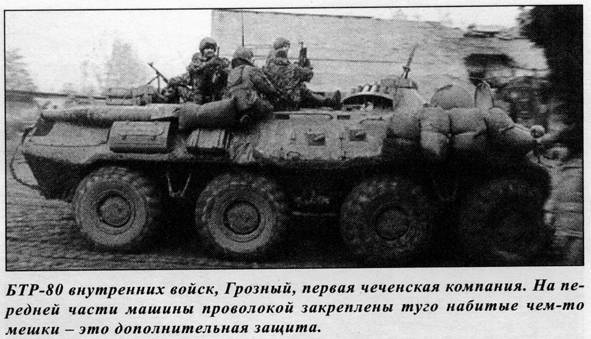
At the initial stage of the company, when the Basayev and Khattab gangs invaded Dagestan, and then in Chechnya itself, the militants conducted completely uncharacteristic for partisans, which in essence were actions to keep the territory. In these conditions, the use of the Russian army and the Internal Troops of standard army armored vehicles - tanks, infantry fighting vehicles and armored personnel carriers - was particularly effective. At the second stage of the gang, they radically changed their tactics, moving to ambush attacks on transport convoys, bombardment of roadblocks and a mine war. In terms of information, food and moral support for
parts of the local population such a guerrilla war can continue for quite some time. The task of directly fighting bandits in such conditions should be carried out by special forces units, so to speak, “in the lair”, that is, in the militant bases where they live - in the forest and in the mountains. The task of the troops holding and controlling the territory is reduced mainly to the protection and patrolling of populated areas and communications, as well as to escorting convoys with cargoes.
The Russian troops in Chechnya are currently engaged in similar tasks. It should be emphasized here that the BTR-80 is completely unsuitable for performing such functions. The design of the BTR-80 (as well as the BMP-2) provides for the concentration of fire because of the armor only in the front hemisphere. Circular shelling is possible only from the weapons installed in the turret, which has insufficient power. Similarly, in the front hemisphere, concentrated and surveillance devices. As a result, soldiers have to be placed on an armored personnel carrier armor, where they can observe and fire on all 360 °, and the entire body of the vehicle does not protect them from the explosion of a mine. In addition, you can always quickly dismount and hide from the fire of militants behind the car body. Thus, in these conditions, the armored personnel carrier lost one of its main functions - the transport of troops under the protection of armor.
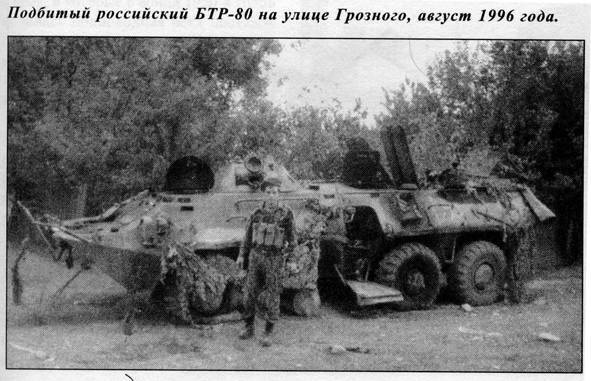
An interesting experience is the use of the BTR-80А, which, unfortunately, there is very little in Chechnya. For example, a motorized rifle company of one of the divisions of the internal troops, armed with several such machines, carried out combat missions in escorting convoys with material resources. Here the BTR-80А demonstrated sufficient reliability and high efficiency. The presence of the BTR-80A cannon columns among the battle-escort vehicles greatly enhanced the firing capabilities of the escort, especially at dusk. At the same time, it was revealed not only the high effectiveness of the enemy's fire damage, but a strong psychological impact on him. At the same time, the military noted that due to the tightness inside the vehicle and too little space for the landing on the hull roof (the radius of "launching" a long barrel 30-mm gun is such that it leaves little room for the shooters on the roof of the BTR), the use of the BTR-80A as a full-fledged armored personnel carrier for the transport of infantry becomes difficult. As a result, the BTR-80А was most often used as a fire support vehicle, especially since there were few of them.
In addition to the hot spots on the territory of the former USSR, wheeled armored personnel carriers, in particular, the BTR-80, were also noted as part of the Russian contingents of the IFIR and KFOR forces that were carrying out peacekeeping missions in the Balkans. Took part in the famous march of Russian paratroopers on Pristina.
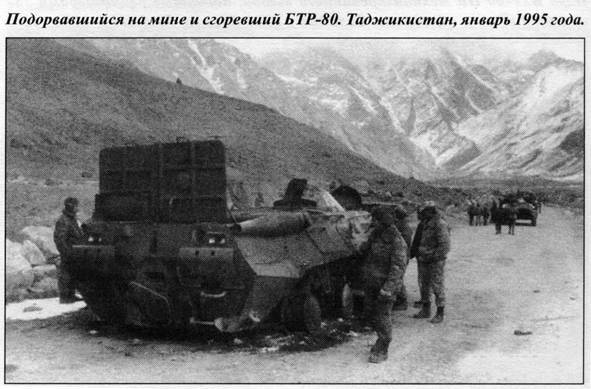
Due to the broad export supplies, the wheeled armored personnel carriers of the Gazov family took part in various military conflicts and far beyond the borders of the former USSR. Their geography includes the Middle and Far East, the south and east of the African continent, and in recent years, southern Europe.
Probably one of the first countries to receive the BTR-60 was Egypt and Syria, into which, from the end of the 1950, a full-flowing river of supplies of Soviet military equipment has flowed. Egypt received its first tanks back in 1956, and before 1967, two more large batches of armored vehicles were delivered here, including the latest T-55 and various armored personnel carriers. Syria before the 1967 received from the USSR about 750 tanks (they were fully equipped with two tank brigades), as well as 585 armored personnel carriers BTR-60 and BTR-152.
As is well known, the six-day Arab-Israeli war of 1967 ended in complete defeat of the Arabs. The most difficult situation on the Egyptian front, besides the loss of a significant territory, the Egyptian army suffered catastrophic losses during the fighting, more than 820 tanks and several hundred armored personnel carriers were destroyed or captured. The re-creation of armor power of the Arab armies in 1967-1973 was conducted at an unprecedented pace, again due to deliveries from the USSR and the countries of the socialist camp. Egypt received 1260 tanks and 750 armored personnel carriers BTR-60 and BTR-50 during this time. In the same large volumes were deliveries of tanks and armored personnel carriers and in Syria. In total, by the start of the “Doomsday War” (October 1973), the Egyptian army was armed with 2400 armored personnel carriers (BTR-60, BTR-152, BTR-50), and Syria had 1300 armored personnel carriers (BTR-60, BTR-152NNX, BTR-XNUMX).
Syrian armored personnel carriers took part in the very first attack of the Israeli positions on the Golan Heights on October 6. The offensive was led by three infantry and two tank divisions. Eyewitnesses of the battle noted that the Syrians were advancing in the "parade" ranks: tanks were ahead, followed by the BTR-60. Here in the "Valley of Tears" during the fierce battles that lasted three days (until October 9), more than 200 Syrian armored personnel carriers were destroyed. Remaining after the “Doomsday War” in service with the Syrian army, the BTR-60PB was used almost a decade later, during the war in Lebanon, 1982 of the year. They, in particular, were in service with the Syrian 85-th separate tank brigade stationed in Beirut and its suburbs.
The BTR-60 was quite widely used during the war in Angola, which lasted more than ten years. According to incomplete data from the USSR, Luanda transferred 370 armored personnel carriers, 319 tanks T-34 and T-54, as well as other weapons worth more than 200 million dollars. Military equipment, weapons and equipment was sent both by air and sea routes from the USSR, Yugoslavia and the GDR. In the 1976-78, the large landing ship “Alexander Filchenkov” with the landing force of the marines (equipped with the BTR-60PB) arrived on the Angolan shores several times. The Cuban military contingent in Angola, which at times reached 40 thousand people, also had their weapons. In total, over ten years since 1975, 500 thousand Cuban volunteers have been to Angola, their losses amounted to 2,5 thousand people.)
Soviet-made armored personnel carriers were used by both sides during the 1977-78 Ethiopian-Somali conflict. Both states and Somalia and Ethiopia were once considered “friendly.” Following the signing of the Treaty of Friendship and Cooperation in 1974, the Soviet Union began to provide Somalia with tremendous assistance in building national armed forces, which were almost completely equipped with Soviet military equipment. In particular, in 1976, they had 250 tanks, 350 armored personnel carriers, etc. Soviet military advisers and specialists engaged in the training of local military personnel in Somalia.
From the year 1976 began a rapprochement with Ethiopia, and already in December an agreement was reached on Soviet military supplies to this country in the amount of 100 million dollars. In reality, the very first large supply of weapons was estimated at 385 million dollars and included 48 fighters, 300 T-54 and 55 tanks, armored personnel carriers, etc.
However, these "friendly" USSR African countries had serious territorial claims to each other, which led to the outbreak of armed conflict in which the Soviet Union took the side of Ethiopia. Substantial assistance was also provided by Cuba, which sent its regular units to that country with full standard armament. In addition to armament, Soviet military specialists arrived in Ethiopia, the number of which, according to Western estimates, reached 2-3 thousand people. They made a great contribution to the success of the Ethiopian troops. For example, during the decisive battles near Harar, when the Cuban brigade stopped, citing the fact that there was a minefield ahead, one of the Soviet generals got into an armored personnel carrier and led the brigade around.
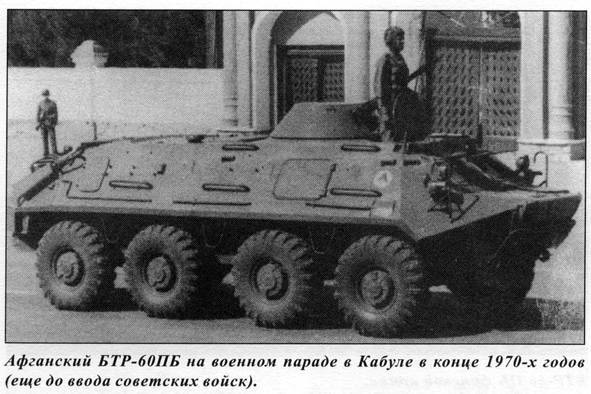
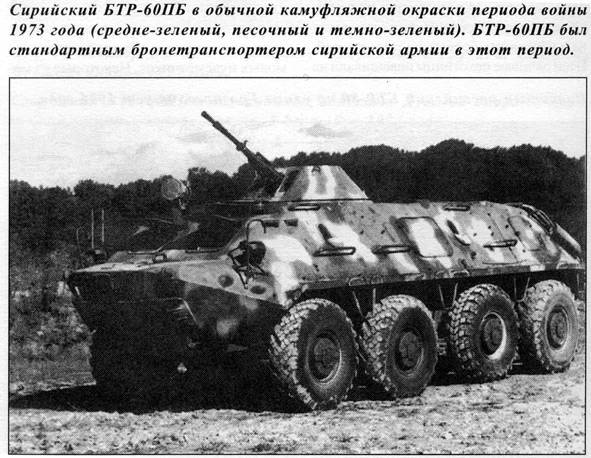
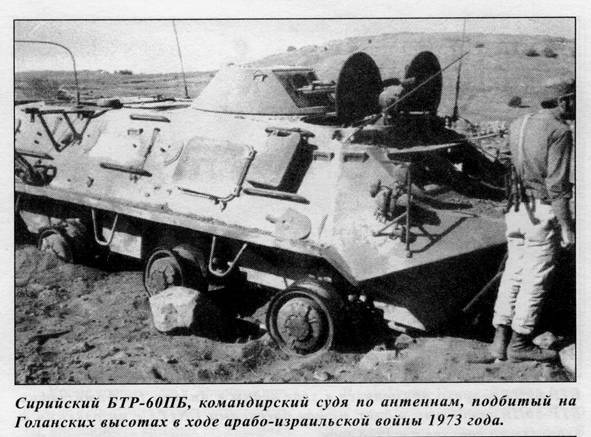
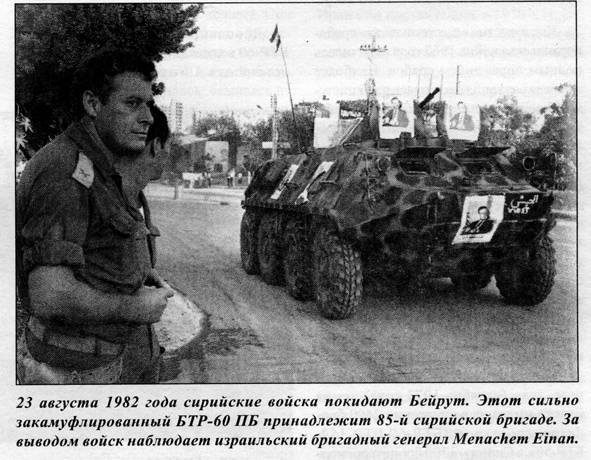
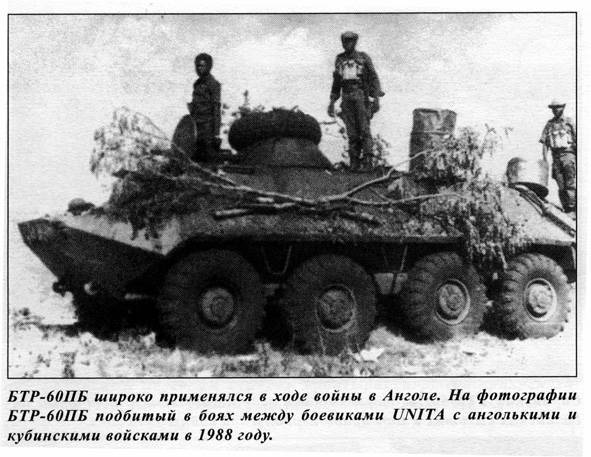
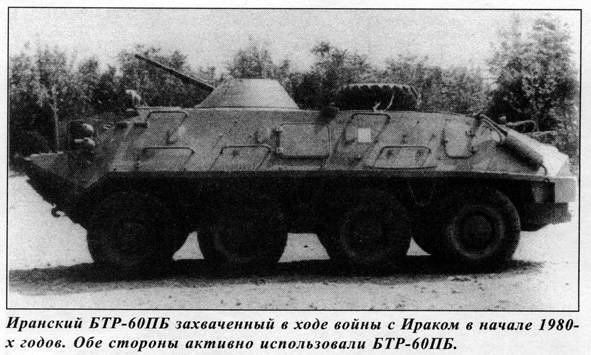
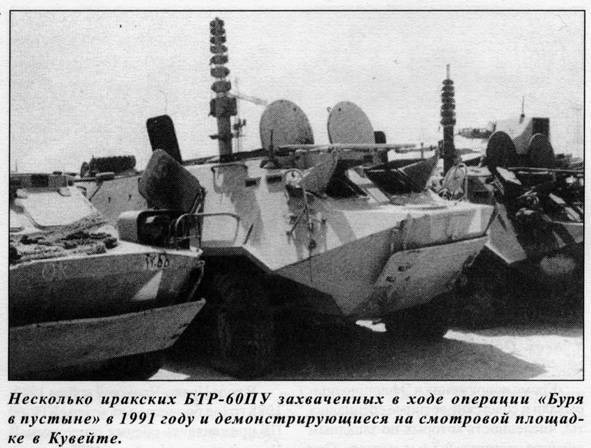
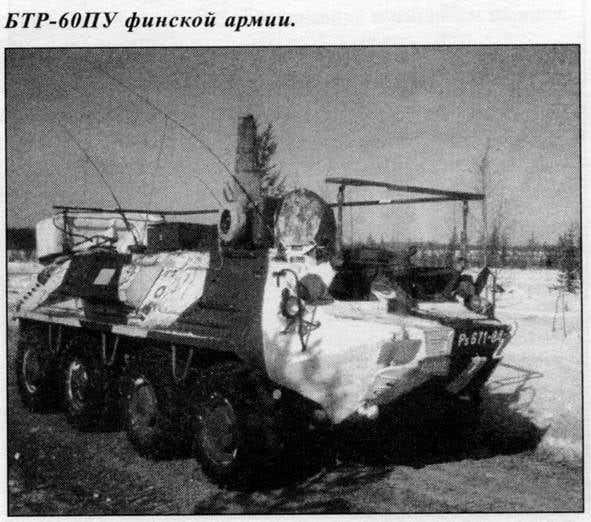
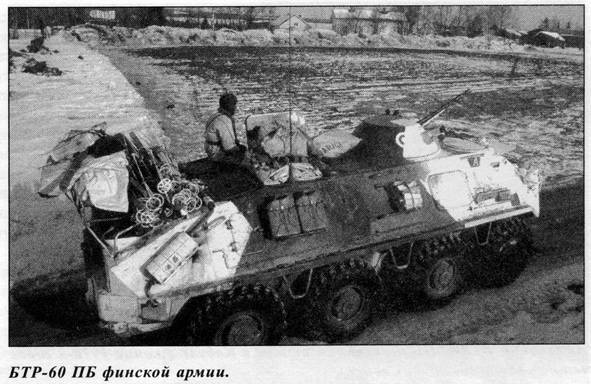
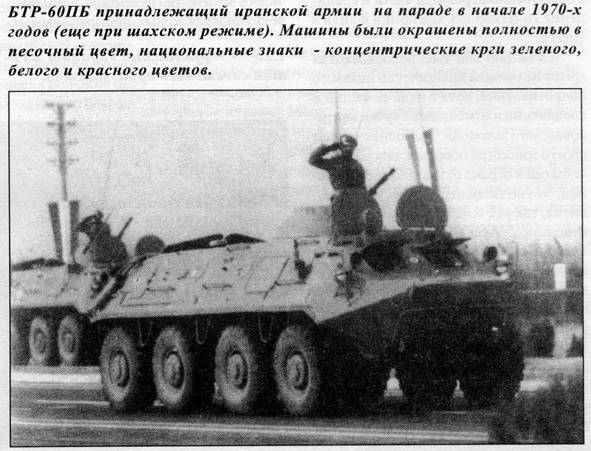
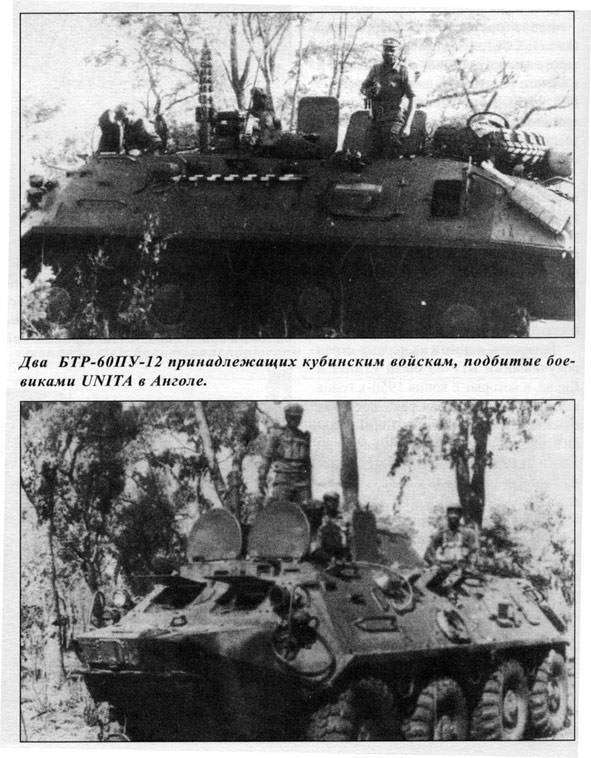
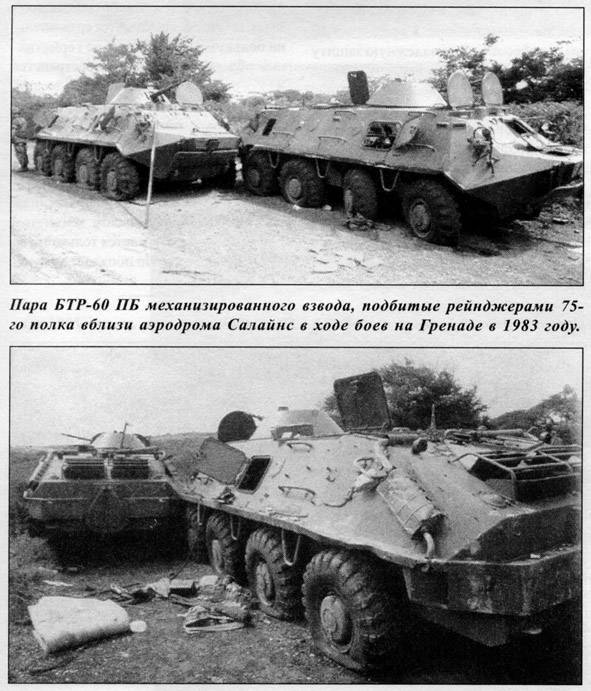
During the Iran-Iraq war of 1980-1988, BTR-60 PB armored personnel carriers were used by both sides. They were delivered to Iran in the 1970-ies, even during the Shah regime. Iraq possessed a large number of such armored personnel carriers. Some of them (mostly control vehicles) even survived until the 1991 year, and were part of the Iraqi forces opposing the interethnic forces during the operation to liberate Kuwait.
Probably for the first time in the battle with the BTR-60 the US military had to face during the US invasion of Grenada. At six o'clock in the morning of 25 in October 1983, the 1900 US Marines and 300 soldiers of the Organization of Eastern Caribbean States landed in St. Georges - the capital of Grenada. Interestingly, the US Navy squadron that delivered them, was carrying a new shift of marines to Lebanon, and was already on the way received an order from President Reagan to "go" to Grenada. Although before the landing, the CIA reported that the construction of the grandiose airport, which, according to Reagan, should have become a transfer point for Soviet and Cuban aircraft, and probably served as the true cause of the invasion, all 200 “workers” from Cuba were occupied, this information was not accurate. Americans faced well-organized resistance to more than 700 Cuban soldiers and officers. So the priority task of the Ranger 75 US regiment was the capture of Point Sales Airport located in the southwestern part of the island.
The operation began with a series of failures. At first, a group of naval special forces was discovered and couldn’t land ashore. Then, on the Hercules headquarters, which delivered the assault forces, navigation equipment flew, and the planes could not reach the target for a long time. Because of this, the timing of the operation was violated. Having landed, the rangers began to free the runway from construction equipment and prepared for the landing of the brigade of the 85th airborne division. However, soon the Cubans launched a counterattack on three armored personnel carriers - 60PB, which was led by a Cuban officer - captain Sergio Grandales Nolasco. After a fierce battle with portable anti-tank fire, armored personnel carriers were destroyed, and Nolasco died. In the next three days, the joint efforts of the paratrooper brigade, two battalions of the 75th regiment, with the support of the assault aviation Cuban resistance was broken, and the Americans completely captured the island. But due to the losses and a number of disruptions, the operation in Grenada is not among the successful ones.
Conclusions:
Finishing the story about GAZ-ovsky wheeled armored personnel carriers, it is possible to give an assessment given to the BTR-60 / -70 / -80 by Russian military experts, which is based on the rich accumulated experience of the combat use of these vehicles. In their opinion, these armored personnel carriers are characterized by a number of serious flaws, the main of which are:
- insufficient specific power - on average 17-19 hp / t, due to the imperfection of the power plant, consisting of two relatively low-power carburetor engines (2x90 hp in BTR-60 and 2X120 (115) hp in BTR -70), the optimal collaboration of which in practice is rather difficult to synchronize, or, nevertheless, the insufficient power of one diesel engine (260-240 hp in the BTR-80);
- insufficient firepower, which does not allow defeating at any time of the day and with sufficient effectiveness. Currently, in order to successfully combat the militants, day and night, in mountainous terrain and in urban environments, it is necessary to have an automatic cannon with the appropriate fire control system (SLA) as the main armament of the BTR;
- relatively weak booking, not exceeding on average 8-10 mm, does not provide reliable protection against the fire of enemy heavy machine-guns (DShK), and the complete absence of any protection against cumulative ammunition (RPG grenades and recoilless guns, light ATGM). According to the experience of armed conflicts, this is the main and most painful lack of almost all light armored vehicles - infantry fighting vehicles, armored vehicles, armored personnel carriers, etc.
It is possible to positively assess their high survivability when undermining on mines and landmines, which is ensured by the features of the device of the running gear - the 8x8 wheel formula with independent suspension of each wheel and transmission. Even when designing an armored personnel carrier, the choice of a multi-axle wheeled propeller was determined not only in order to ensure high passability, but also to achieve the highest survivability in case of mine explosions. In the course of local conflicts, there have been repeated cases of “creeping” APCs from under fire under their own power, which lost one or even two wheels during a mine explosion! This feature also draws attention to the fact that both in Afghanistan and in Chechnya, the enemy did not and does not use regular mines of anybody’s production on the roads against our equipment, but improvised landmines that are many times more powerful than them. Here it is necessary, however, to note that the flat and thin bottom of the armored personnel carriers does not hold the shockwave very well. This drawback is partially eliminated in the design of the BTR-90 with a U-shaped bottom.
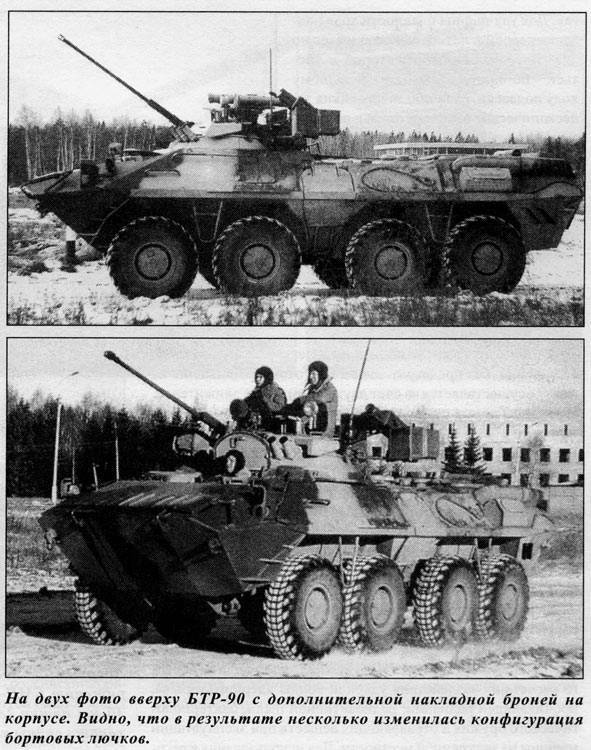
Deserves respect and the relative (compared to tanks) survivability of wheeled armored personnel carriers when hit by cumulative anti-tank grenades outside the engine compartment, even in the absence of any special protection. This is ensured by the relatively large, as a rule, non-hermetic volume of the internal space of the BTR - the control and amphibious units, the lack of detonating ammunition and fuel tanks in the amphibious unit. Thus, in the APC there is no abrupt jump in air pressure, which often disables (“jamming”) the crew of the tank in its small armored confined space. Only what is directly affected by the cumulative jet is affected.
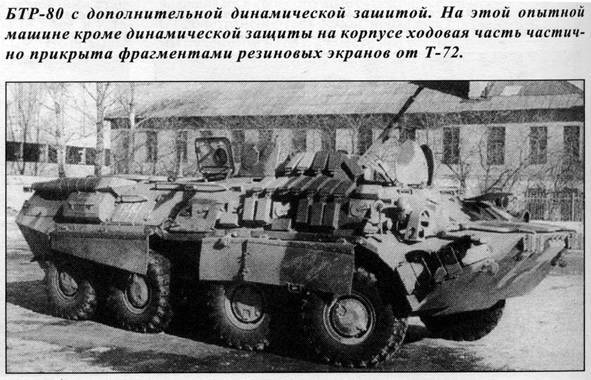
Information